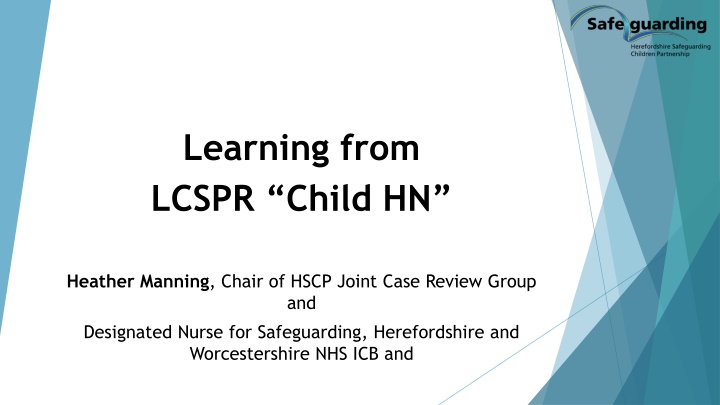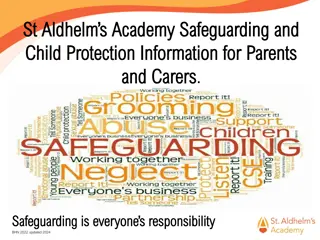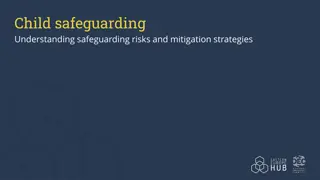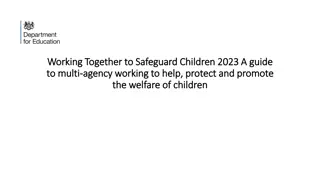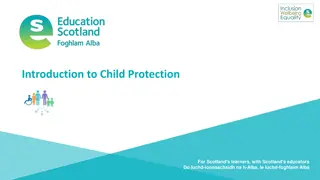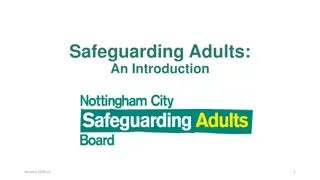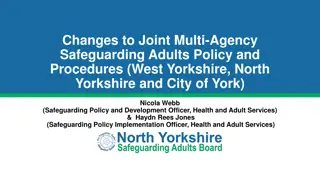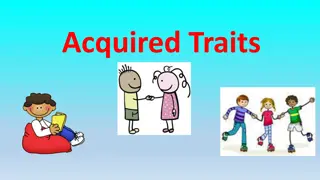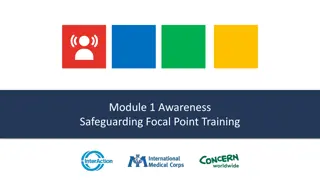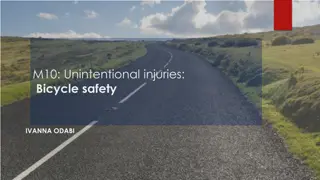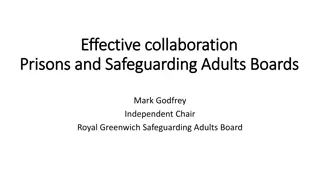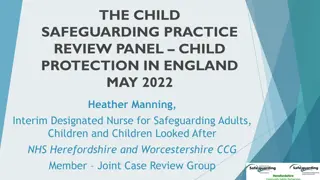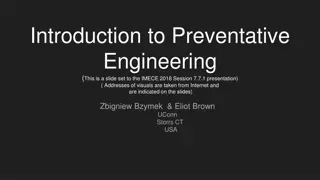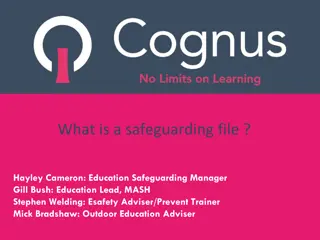Safeguarding Review for Child HN: Lessons Learned and Preventative Measures
Child HN's near miss event prompted a Local Child Safeguarding Practice Review to identify key learnings and implement necessary changes. Key questions explore agencies' responses to the complexities of managing health conditions and safeguarding the child's well-being.
Download Presentation

Please find below an Image/Link to download the presentation.
The content on the website is provided AS IS for your information and personal use only. It may not be sold, licensed, or shared on other websites without obtaining consent from the author.If you encounter any issues during the download, it is possible that the publisher has removed the file from their server.
You are allowed to download the files provided on this website for personal or commercial use, subject to the condition that they are used lawfully. All files are the property of their respective owners.
The content on the website is provided AS IS for your information and personal use only. It may not be sold, licensed, or shared on other websites without obtaining consent from the author.
E N D
Presentation Transcript
Learning from LCSPR Child HN Heather Manning, Chair of HSCP Joint Case Review Group and Designated Nurse for Safeguarding, Herefordshire and Worcestershire NHS ICB and
Background Child HN is a teenager who was diagnosed with Type 1 Diabetes when he was 11 years old. In 2022, Child HN, his mother and siblings moved from Worcestershire to Herefordshire due to domestic abuse. They were provided temporary accommodation in a refuge. The children had a Child in Need Plan in Worcestershire, which was closed a few months after the family moved to Herefordshire. The children were referred to Herefordshire Children s Services for an assessment, and were then supported through a Child in Need Plan in Herefordshire. In Herefordshire, Mrs HN said that Child HN would be Electively Home Educated. In Worcs he had home provision (s19) education and had not been attending school. In 2023, Child HN was brought to hospital with concerns of Diabetic Ketoacidosis. His condition became critical, with death a real possibility. Child HN survived and recovered, however it was described as a near miss event.
What is a Local Child Safeguarding Practice Review This significant event met the criteria for the HSCP to commission a Local Child Safeguarding Practice Review. Local Child Safeguarding Practice Reviews (LCSPRs): Local Child Safeguarding Practice Reviews (LCSPRs): Multi-agency learning review, completed when a child dies or is seriously harmed*, and abuse or neglect was known or suspected. *Serious Harm is when a child has sustained a life-threatening injury, and/or likely long-term impairment to their health or development. The purpose of Review is to: Establish whether there are any lessons to be learnt Identify what should change as a result of the learning Try to prevent similar incidents from happening in the future
Methodology for LCSPR Child HN Rapid Review completed in 15 working days Decision to progress to LCSPR Independent Author Sarah Holtom Multi-Agency Review Panel Agencies involved with the family in Herefordshire and Worcestershire provided information/analysis their agency s involvement with the family. Practitioner Learning event Speaking with the family Final report approved by Safeguarding Partners, and submitted to the National Panel for Child Safeguarding Practice Reviews Report published 18 March 2024
Key questions for the review How Child HN s world was understood. How agencies distinguished between the complexities of unintentional errors in management of health conditions and parental medical neglect. How information was shared between local authority areas and across agencies to keep Child HN safe and meet his needs. How effectively support and services were put in place by agencies to ensure a timely impact on Child HN s day to day life.
Practice Learning 1: Understanding the Childs World Child HN s world was not fully understood and his voice/lived experiences missing from most of the records seen. Child HN s culture and identity needs were not considered, and possibly due to his large stature and physical appearance he was seen as older than his chronological years and assigned more responsibility by his family and professionals.
Practice Learning 1: Understanding the Childs World Practitioners need to actively hear what the child has to say or communicate, observe, and understand what is life like for this child right now. This needs to be recorded and clearly inform the plans and support that are put in place. Adolescent children need additional emotional support when faced with a long-term health diagnosis. HSCP Voice of the Child Toolkit
Practice Learning 2: Working Effectively with Families Ms HN felt she was not given the right support at the right time by some agencies when they moved to Herefordshire. It would have been stressful for the family moving to a new area and feeling that the help was not available to them. This may have resulted in a loss of trust in certain agencies with a resultant impact on professionals ability to build relationships. This resulted in the family feeling let down by CSC until later in the period under review.
Mrs HN Feeling blamed by health and CSC professionals for either not being able to manage her child s behaviours or not being able to safely give him insulin injections. Describing how she often felt left to my own devices to manage her son; his non-compliance with having injections and understanding his range of neurodiversity and educational needs. Feeling petrified her children would be removed from her care if she was seen to do anything wrong she knew she was not in a psychologically safe space due to having lived in a world of being controlled and coerced and talked of feeling guilt that her children had always lived in this environment. I m damned if I do and damned if I don t.
The Skilled Helper. Show they care by using kind words and gestures to a family, for example making drinks and sitting to play games. Listen without judgement. Are honest about what their concerns are, also reminding the family of what things they need to build upon and what the family strengths are, to ensure progress. Show a good knowledge of specialist conditions and if they don t know something are honest about this and do their homework, involving the child and family so they learn together. Pull it all together by working closely with the family and a range of multi- agency professionals. Advocate on a family s behalf, when the family feel unable to Do what they say they will, and if they can t they tell you why.
Practice Learning 3: Multi-Agency Cross-Border Information Sharing There was an inadequate handover of services and support from Worcestershire to Herefordshire partner agencies, which included Children s Social Care, Health Services (GP & Hospital) and Education. This resulted in a full picture not being understood by Herefordshire at the start of the period under review.
Practice Learning 3: Multi-Agency Cross-Border Information Sharing Lack of multi-agency coordination and information sharing between local areas resulted in key information either simply not being transferred or being shared single agency to single agency. This clearly impacted on understanding levels of need and any possible risks being understood early on.
Practice Learning 4: Ensuring Timely Intervention and Partnership Working to Effect Change for Children Multi-agency Interventions and services to Child HN were far too slow and fragmented. This lack of joined up communication and coordination resulted in delay where no holistic picture of HN s range of needs were fully understood by any individual agencies and when working together.
Practice Learning 4: Ensuring Timely Intervention and Partnership Working to Effect Change for Children Child in Need Plans should incorporate medical treatment plans for children with serious health issues, and need to ensure SMART actions that are reviewed to evidence positive outcomes for children. Medical teams should consider how to build connection and help understand young people who struggle with a diagnosis. Mental health services should continue to offer bespoke interventions, based on the needs of the child, in their own spaces and places. Escalation procedures must be used to raise matters when there is delay in progressing solutions for families.
Practice Learning 5: Recognising Medical Neglect when working with adolescents with chronic conditions There was little consideration by professionals around understanding what constitutes significant harm thresholds for medical neglect where a child has a chronic medical condition and concerns about the management of this. There was a need for professionals to adopt a more enquiring stance when working with the family to understand the inconsistency seen regarding parental management of medication.
Practice Learning 5: Recognising Medical Neglect when working with adolescents with chronic conditions Children with a life-threatening condition require a robust health and children s social care response to understand the complex area of unintentional errors with condition management versus medical neglect. Any missed appointments with concerns regarding poor compliance with medication must be taken seriously and chronologies used to see patterns. A neglect tool should be used, as this will provide a consistent approach HSCP Child Neglect Tools and Resources
Practice Learning 6: Supporting vulnerable children who are Electively Home Educated The review raised concerns that, as Child HN was not attending a school, he did not benefit from the added safety of being seen in an education setting on a regular basis. Understand the nature of a child s poor school attendance and reluctance in order to effectively address it. School refusal by a child can be the consequence of a child or adolescent having physical, psychological, and emotional distress. A multi-agency approach to working with the child and family helps professionals to better understand the child and family situation and can ensure children are kept safe by being in an education provision.
Summary Key Messages Voice of the Child - Practitioners must find creative ways to listen to child and ensure their views and recorded and inform the plans for them. Skilled Helper - Practitioners should consider the description of a Skilled Helper provided by Mrs HN in their approach to working with families. Cross-Border Transfers - When a family moves across local authority boundaries, agencies must follow cross-border transfer protocols, ensuring a swift and full transfer of information. Consider multi-agency transfer meetings in complex situations. Medical Neglect - The difference between unintentional errors and parental medical neglect should be considered and addressed. EHE - Vulnerabilities of children who are Electively Home Educated should be understood, and if appropriate a multi-agency approach taken to ensure children are kept safe by being in an education provision.
Whats next. Embedding Learning into Practice Working with adolescents with chronic conditions Review HSCP Child Neglect Tools medical neglect guidance Practice Learning Briefings on Voice of the Child Strengthening the quality of Child in Need Plans Identify solutions to ensure children with Type 1 or 2 diabetes are able to see a mental health professional. Cross-Border Protocols to be strengthened and followed EHE procedures reviewed increased rigour and tracking, and more contact with EHE families
Reflection. What parts of this learning are particularly relevant for you? Does any of this learning surprise you? How can you contribute to the ongoing dissemination of the learning from this review?
Resources and Links Final-Report-LCSPR-Child-HN_Herefordshire-January-2024.pdf (herefordshiresafeguardingboards.org.uk) RRLearningBriefing_DiabetesManagementandCrossBorderIssues_May2023.docx (live.com) Diabetes UK - Know diabetes. Fight diabetes. | Diabetes UK HSCP Voice of the Child Participation Toolkit West Midlands Protocol Protecting Children who Move Across Local Authority Borders Escalation policy: Resolution of professional disagreements (procedures.org.uk) Disguised compliance, coercive control and families who are hostile or resistant to change | West Midlands Safeguarding Children Group
